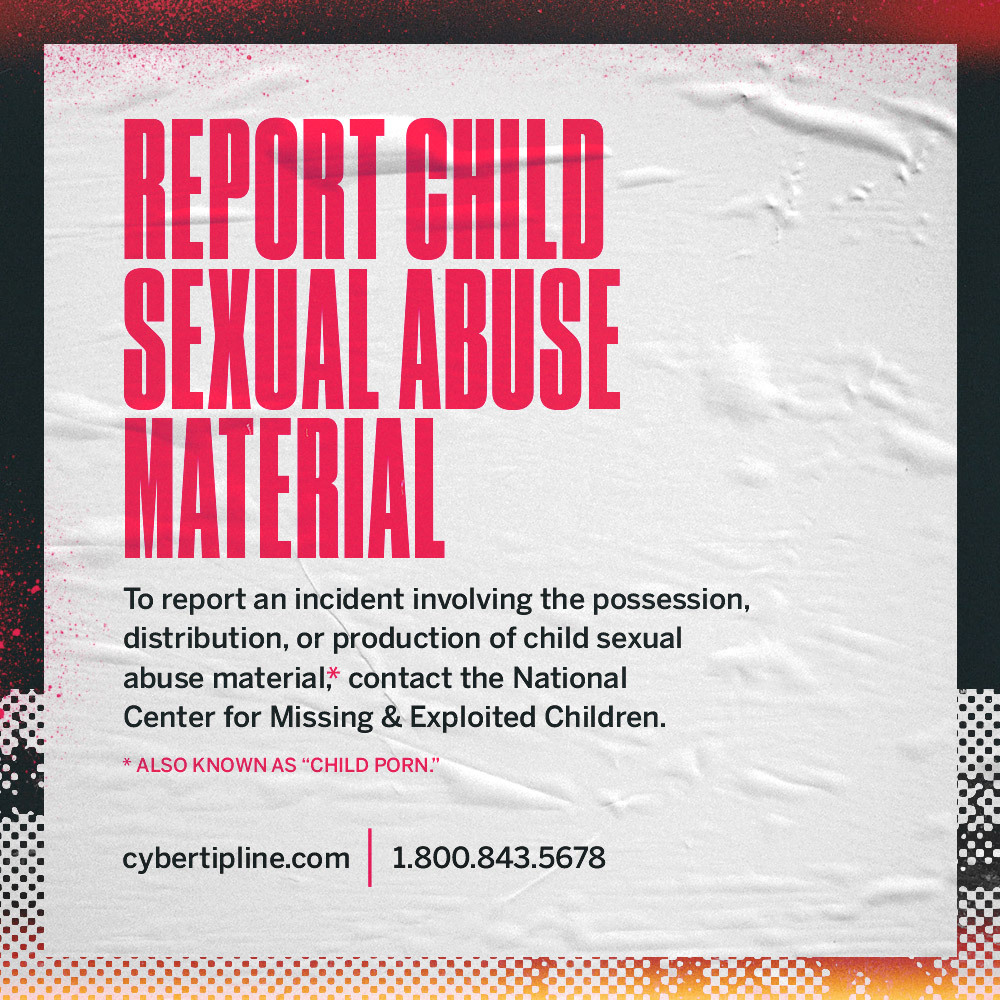As if the global situation with COVID-19 wasn’t bad enough, online sexual predators have been using the virus as an opportunity to groom children for sexual exploitation.
Any number of emergency circumstances can contribute to an environment of increased child abuse, and we are in a pandemic. Research shows that child abuse escalates during crises like natural disasters, and COVID-19 has similarly disrupted the social and economic stability of families, which leaves children vulnerable.
Even in homes that are financially weathering this storm, children are spending more time online than ever before, which again puts them at risk. Online grooming can happen even when a child is at home with their family, presumably safe behind closed doors.
Combine the increased screen time with global instability and predators on the prowl and we may have another kind of pandemic on our hands.
A dramatic increase in reports
Child sexual abuse material—also known as “child pornography”—has been on the rise in recent years. Some reasons for the rise in numbers are a result of improved awareness and reporting, but tragically, also increased demand.
That demand seems to have boomed in the last few months, since COVID hit. Across the world, when countries shut schools and locked down cities, child sexual predators have been chatted on dark web forums about how they now have more opportunities to contact children remotely and more time to dedicate to abuse.
Reports from child protection nonprofits suggest the offenders are following through on their discussions.
The National Center for Missing and Exploited Children (NCMEC) in the US has recorded a 106% increase in their CyberTipline reports of suspected child sexual exploitation. This is a jump from 983,734 reports in March 2019 to over 2 million in March of this year. In April, the number of reports doubled again to 4.2 million.
The spike in reports is surprising because one key in the reporting cycle has been removed. Teachers and educators tend to be the largest group that reports child abuse cases. Since many children were out of school for months, and now many are remote learning, teachers have not been able to monitor for telltale signs of abuse. As Jessica Bartlett, child-welfare expert at Child Trends, put it, “We’ve lost a big piece of our eyes and ears.”
Hopefully, the numbers are a sign of vigilant parents and guardians, but it’s unclear. According to research commissioned by the Australian Centre to Counter Child Exploitation, only 52% of parents spoke to their kids about online safety, and a recent study by an online learning academy reported 77% of parents had rules about screen time, but during the peak pandemic quarantine months nearly all (76%) had altered or suspended the house rules around technology. This included screen time, restrictions on social media sites, or where kids could use their devices.
Despite COVD-19 creating some desperate situations at the personal and global level, protecting children from online sexual exploitation is something we cannot afford to relax.
Online predators see the pandemic as an opportunity
Since the pandemic began, authorities around the world have noticed peculiar activity and discussions about child sexual abuse on the dark web.
Fernando Ruiz from Europol found that sexual predators were posting in online forums about “seizing the opportunity of this confinement” and discussing how to access children since they are online more often.
Australian authorities similarly have witnessed child abuse websites “crashing” because of increased traffic and also discovered a predator “handbook” on the dark web, complete with details on how to coerce children into sending sexual images or videos of themselves.
Part of the guide advised predators to find their gratification online instead of arranging to meet a child in-person because of lockdown restrictions. NCMEC also confirmed that child traffickers are adapting to the circumstances and moving away from face-to-face interactions, and buyers are subscribing to videos instead.
That being said, the ECPAT reported investigating “delivery” or “drive thru” services of child sexual exploitation in Brazil as a terrifying alternative.
Most child sexual abuse material is made by a perpetrator, but an increasing amount—about one third—is “self-generated,” meaning the child has been groomed into taking photos or videos of themselves and sending the content to the perpetrator. Parents and guardians can intervene early by learning the signs of grooming.
How porn influences child sexual abuse
Despite most of the recent plotting by predators taking place on the dark web, that’s not the only place where child abuse images exist. Recent examples have shown that major porn sites like Pornhub host and profit from illicit images and videos—even child abuse.
The site gives lip service to championing victims and then turns nonconsensual videos into porn genres: “leaked sex tapes,” “revenge porn,” or “teens.” Not every single video tagged in similar search terms are genuinely stolen videos of abuse, but how are consumers expected to tell the difference?
The porn industry has responded to the rise in demand for exploitation and simulates rape tapes or other abuse fantasies. Some would argue that this is acceptable as long as the performers were consenting throughout the entire filming process, but it is problematic to encourage exploitative sexual appetites. If you agree that child abuse should remain unacceptable in our society, join with us in educating how even fantasized child abuse material is problematic.
Your Support Matters Now More Than Ever
Most kids today are exposed to porn by the age of 12. By the time they’re teenagers, 75% of boys and 70% of girls have already viewed itRobb, M.B., & Mann, S. (2023). Teens and pornography. San Francisco, CA: Common Sense.Copy —often before they’ve had a single healthy conversation about it.
Even more concerning: over half of boys and nearly 40% of girls believe porn is a realistic depiction of sexMartellozzo, E., Monaghan, A., Adler, J. R., Davidson, J., Leyva, R., & Horvath, M. A. H. (2016). “I wasn’t sure it was normal to watch it”: A quantitative and qualitative examination of the impact of online pornography on the values, attitudes, beliefs and behaviours of children and young people. Middlesex University, NSPCC, & Office of the Children’s Commissioner.Copy . And among teens who have seen porn, more than 79% of teens use it to learn how to have sexRobb, M.B., & Mann, S. (2023). Teens and pornography. San Francisco, CA: Common Sense.Copy . That means millions of young people are getting sex ed from violent, degrading content, which becomes their baseline understanding of intimacy. Out of the most popular porn, 33%-88% of videos contain physical aggression and nonconsensual violence-related themesFritz, N., Malic, V., Paul, B., & Zhou, Y. (2020). A descriptive analysis of the types, targets, and relative frequency of aggression in mainstream pornography. Archives of Sexual Behavior, 49(8), 3041-3053. doi:10.1007/s10508-020-01773-0Copy Bridges et al., 2010, “Aggression and Sexual Behavior in Best-Selling Pornography Videos: A Content Analysis,” Violence Against Women.Copy .
From increasing rates of loneliness, depression, and self-doubt, to distorted views of sex, reduced relationship satisfaction, and riskier sexual behavior among teens, porn is impacting individuals, relationships, and society worldwideFight the New Drug. (2024, May). Get the Facts (Series of web articles). Fight the New Drug.Copy .
This is why Fight the New Drug exists—but we can’t do it without you.
Your donation directly fuels the creation of new educational resources, including our awareness-raising videos, podcasts, research-driven articles, engaging school presentations, and digital tools that reach youth where they are: online and in school. It equips individuals, parents, educators, and youth with trustworthy resources to start the conversation.
Will you join us? We’re grateful for whatever you can give—but a recurring donation makes the biggest difference. Every dollar directly supports our vital work, and every individual we reach decreases sexual exploitation. Let’s fight for real love:





